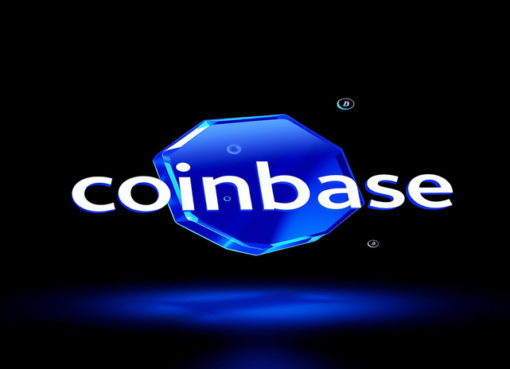The crypto payments market is growing rapidly although some countries ban the circulation of digital assets. According to data from the analytical service Statista, approximately 6 million transactions are conducted daily in the world. The majority of crypto payments occur in Ethereum, Bitcoin, and Stellar, while the most active users are still from countries with […]
The crypto payments market is growing rapidly although some countries ban the circulation of digital assets. According to data from the analytical service Statista, approximately 6 million transactions are conducted daily in the world. The majority of crypto payments occur in Ethereum, Bitcoin, and Stellar, while the most active users are still from countries with a low level of bank system development. This goes to prove that cryptocurrencies became not just an investment asset but a fully functioning means of payment to be reckoned with. Even despite the government bans, the crypto payments market will continue to grow with such growth drivers as these exact developing countries. We discussed the future of cryptocurrencies and crypto payments with the co-founder of the mobile crypto bank MinePlex Alexander Mamasidikov.
Alexander, the crypto payments market is developing unevenly in the world. In some countries, it is possible to buy for cryptocurrencies almost anything from pizza to yachts, while in other countries, like in the CIS region, digital coins are practically getting banned? Why?
А.М.: For a long time, governments ignored cryptocurrencies. Then, they noticed the growing interest in crypto among citizens and had to pay attention. In some countries, the government’s stance on fintech remains positive. In other – governments ban the circulation of cryptocurrencies at all. The root cause is the impossibility of governments to regulate digital assets. Also, restrictive laws are connected with the impossibility to recover investors’ funds in case of loss, security threats, and money laundering. By contrast, other countries allow developing crypto businesses and officially tax crypto like, for example, Malta, Bermuda, Switzerland, Singapore, Germany.
How did the crypto payments landscape change when Elon Musk publicly announced the refusal to accept cryptocurrencies as a means of payment? Did other companies follow and refuse to accept crypto?
А.М.: The main objective of the crypto industry is to make digital assets an everyday means of payment, so people can use them and pay in it on par with fiat anywhere without limitations. It is a fertile field for speculations, and Elon Musk manipulates the audience by first supporting crypto payments and then denying the support with a goal to attract more interest into his company. In the past, Musk’s statements indeed influenced the market and the price of cryptocurrencies, but it is no longer so. Now there are plenty of projects that aspire to embed cryptocurrencies into real life. They work relentlessly to transform the financial services market and they do not deviate from this course.
Do you believe that cryptocurrencies can replace fiat money as a means of payment?
А.М.: It is possible that in the future cryptocurrencies can replace fiat. But this will not happen overnight. Nevertheless, already today, the circulation of cryptocurrencies takes off in developing countries. Research shows that the majority of transactions are conducted in these developing countries. It can be explained by the lack of access to traditional financial services among citizens and very high commissions. The wide adoption of mobile networks and smartphones allows users to send crypto within and outside the country when they have no access to banks.
Is it possible now to buy anything for crypto in Russia?
А.М.: Statistically, the majority of Russian businesses that accept cryptocurrencies as a means of payment are situated in Moscow and Saint-Petersburg. Many internet stores accept bitcoins. It is possible to buy lots of goods from electronics to airline tickets for bitcoins. Also, it is possible to find individual entrepreneurs who sell goods and services for cryptocurrencies. Lots of deals are closed in such exchange platforms as cryptocurrency exchanges, P2P platforms, and OTC platforms.
Do you believe that the creation of CBDC aims to destroy the crypto market and make the electronic version of fiat money the main means of payment?
А.М.: Governments try to take over control over the regulation of the crypto market in all kinds of ways. One of the ways is to create a digital currency that they could control. Of course, decentralization is out of the question with such coins. But CBDC is not the means to destroy cryptocurrencies. It is impossible to destroy cryptocurrencies. Stakeholders are too many, and too many are involved in this game.
As early as last year, several companies shared plans on developing cryptomats in Russia but so far none of these projects was launched. Do you believe that in the future there will be crypto payments in Russia?
А.М.: No one can answer this question with real accuracy. In Russia, the government stance on cryptocurrencies is ambivalent. In comparison with some other countries where the government takes into consideration the financial industry evolution and considers digital assets, Russia is different. New laws are being introduced that attempt to regulate cryptocurrencies but they are one-sided and controversial. Among crypto users in the world, the share of Russian citizens is substantial. But I do not think that official cryptomats will appear in Russia anytime soon.
How popular are crypto payment cards today? How many crypto card users are in Russia and CIS countries, and where can they pay with them?
А.М.: At the moment, there are almost no real cryptocurrency payment cards. In the market, there are prepaid cards on which users put crypto by manually converting it into fiat. That way, when a user pays with this card for goods or services, a seller gets fiat, not cryptocurrencies. Popular cards of this type are Wirex, Revolut, Crypto.com. Now many companies are developing their own crypto cards but they all more or less fall into this category. Also, such companies as Mastercard and Visa repeatedly declared an intention to develop such cards. Solving this problem became one of the goals of creating the MinePlex CrossFi Banking. It is planned to issue crypto cards with automatic conversion crypto-fiat-crypto, for users will be able to spend cryptocurrencies with their cards directly to sellers without thinking about exchanges.
How do you see the future of the crypto payments industry?
А.М.: The crypto industry is at a very interesting point in its development. We have passed a stage of denial but have not progressed yet to the stage of regulation and mass adoption. Therefore, every crypto project that will fill a niche, be it crypto cards, exchange or payment gateways, will be the opinion leader. Experts talk about the next 5-10 years when major companies and government agencies will be ready to accept cryptocurrencies as part of the economic system. But it is safe to say that cryptocurrencies are here to stay.
Please check out latest news, expert comments and industry insights from Coinspeaker’s contributors.




